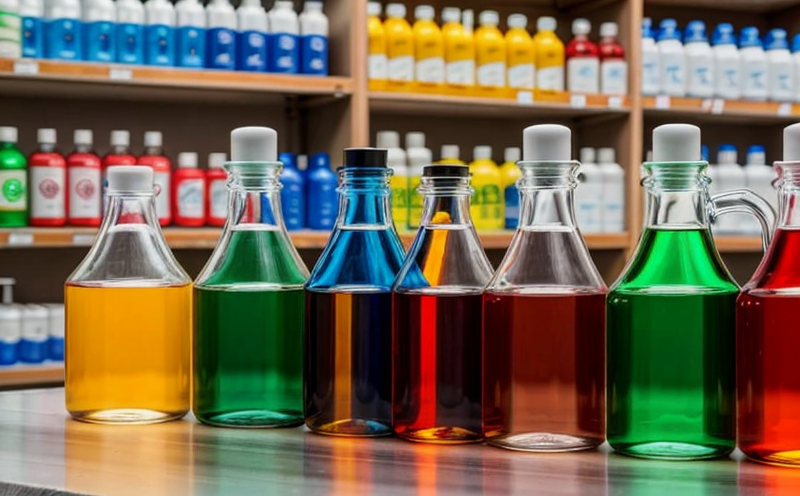GB T 30157 Determination of phthalates in textiles
The GB T 30157-2013 standard for the determination of phthalates in textiles is a critical procedure that ensures compliance with national and international regulations aimed at protecting human health. This method, developed by the Standardization Administration Committee of China (SAC), specifies procedures to detect di(2-ethylhexyl) phthalate (DEHP), dibutyl phthalate (DBP), and benzyl butyl phthalate (BBP)—three primary phthalates restricted under various global standards.
The standard applies to a wide range of textile products, including clothing, home textiles, and industrial fabrics. Compliance with this regulation is essential for manufacturers who wish to ensure their products are safe from harmful chemicals. The test aims to identify the presence and concentration levels of these phthalates which have been classified as hazardous substances due to their potential to disrupt endocrine systems.
The GB T 30157 method involves several key steps:
- Sample preparation: Properly cutting and weighing samples according to specified dimensions.
- Extraction: Utilizing an extraction solvent, typically a mixture of acetonitrile and methanol in specific ratios.
- Cleanup: Passing the extract through activated carbon or silica gel columns for purification.
- Analysis: Using gas chromatography (GC) with mass spectrometry detection to quantify phthalates.
The standard outlines detailed acceptance criteria, specifying limits of quantification and detection. It also provides guidance on handling results, including correction factors for different extraction methods and sample types. Proper interpretation of these results is crucial for ensuring accurate compliance assessments.
Understanding the implications of phthalate exposure requires a broader context within textile manufacturing practices. Phthalates are widely used as plasticizers in various industrial applications due to their ability to soften plastics without compromising strength or flexibility. However, their use raises concerns about environmental impacts and human health risks associated with prolonged contact through clothing or other textile products.
By adhering to the GB T 30157 standard, companies can demonstrate their commitment to maintaining high standards of quality control and ensuring product safety across international markets. This is particularly important given increasing demands from consumers for transparency regarding ingredient sources and production processes.
Why It Matters
The determination of phthalates in textiles using GB T 30157 is not merely a formality; it plays a vital role in safeguarding public health. Phthalates, known for their ability to enhance the flexibility and durability of plastics, have been linked to various adverse effects when ingested or absorbed through skin contact over prolonged periods.
Exposure to high levels of phthalates can lead to reproductive issues, developmental disorders, asthma, and other serious health problems. These concerns have prompted stricter regulations worldwide, including the European Union's Restriction of Hazardous Substances (RoHS) directive and China's own GB T 30157 standard.
Manufacturers who fail to comply with these standards risk significant penalties ranging from fines to product recalls. Moreover, non-compliance can damage brand reputation and lead to loss of market share in competitive industries where consumer trust is paramount.
The importance of compliance extends beyond legal requirements; it also reflects a broader trend towards sustainable practices within the textile industry. Companies that prioritize environmental responsibility by adopting rigorous testing protocols like those specified in GB T 30157 are better positioned to meet evolving customer expectations and contribute positively to global sustainability efforts.
International Acceptance and Recognition
- European Union (EU): The EU's RoHS directive includes phthalates among restricted substances. Compliance with GB T 30157 ensures that textile products meet this requirement.
- United States: Although not directly aligned, the results from GB T 30157 can be used as part of broader assessments required under regulations like California Proposition 65 or the Federal Hazardous Substances Act (FHSA).
- Japan: While Japan has its own set of standards for phthalates in textiles, compatibility between GB T 30157 and Japanese guidelines allows seamless international trade.
- Australia/New Zealand: Similar to the EU approach, compliance with GB T 30157 supports meeting criteria set by these countries' respective authorities.
The widespread acceptance of GB T 30157 underscores its significance in global supply chains. By ensuring that all involved parties adhere to this standard, businesses can maintain consistent quality standards regardless of geographical location or regulatory framework.
Environmental and Sustainability Contributions
The determination of phthalates in textiles using GB T 30157 contributes significantly to environmental protection efforts. By identifying the presence and concentration levels of these chemicals, manufacturers can take proactive measures to reduce their usage or seek alternative materials that do not contain harmful substances.
This focus on sustainability aligns with broader industry trends towards more eco-friendly practices. Companies committed to reducing their carbon footprint will find value in integrating GB T 30157 into their quality assurance processes, thereby contributing positively to both environmental and social goals.
Moreover, the use of advanced testing techniques like gas chromatography coupled with mass spectrometry (GC-MS) not only enhances accuracy but also supports continuous improvement initiatives aimed at minimizing waste generation during production cycles. Such practices foster innovation within the textile sector while promoting long-term resilience against regulatory changes and market demands.





